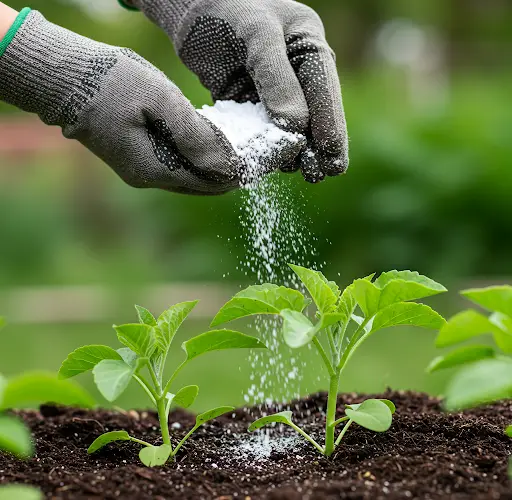One of the most significant threats to stone fruit crops is monilinia, a fungal disease that affects a variety of fruits, including cherries, sour cherries, plums, apricots, peaches, and even apples. This devastating disease typically begins its attack during the flowering period, causing severe damage that can result in significant economic losses. To protect fruit trees, it is crucial to take preventive measures and apply effective treatments.
Symptoms of Monilinia Infection
Monilinia, commonly known as brown rot, manifests in several ways, depending on the stage of infection. The first signs typically appear during the flowering phase when infected blossoms begin to decay. This early infection can lead to the drying of individual twigs and branches, affecting the overall health of the tree. As the disease progresses, it spreads to developing fruit, causing them to rot and decay. The same symptoms can be observed in apple trees, where monilinia affects both the blossoms and fruit.
The primary indicators of monilinia infection include:
- Blossom Blight: Flowers turn brown, wilt, and die prematurely, often remaining attached to the tree.
- Twig and Shoot Dieback: Infected flowers can lead to the spread of the fungus into the twigs, causing them to dry out and die.
- Fruit Rot: As the disease progresses, fruit develops brown, sunken lesions covered in a powdery, grayish spore mass.
- Mummified Fruit: Infected fruit often shrivels, darkens, and remains attached to the tree, serving as a source of further infection.
Economic Impact and Risk Factors
Monilinia is considered one of the most dangerous fruit diseases due to its potential to cause significant economic damage. Unchecked infections can result in large-scale fruit losses, affecting both commercial orchards and home gardens. The disease spreads rapidly under specific environmental conditions, particularly in wet and humid weather during the flowering and fruiting seasons. Rain, high humidity, and moderate temperatures create the perfect conditions for fungal spores to thrive.
Since the disease can persist from season to season, overwintering in mummified fruit and infected twigs, early prevention and timely treatment are crucial in mitigating its impact.
Preventive Measures and Treatments
The best strategy to combat monilinia is a combination of preventive measures and appropriate treatments. While chemical fungicides are commonly used, organic solutions have been somewhat overlooked despite their effectiveness. The following treatments, which are also suitable for organic farming, can be used to prevent monilinia infections:
1. Copper-Based Preparations
Copper hydroxide is one of the most effective treatments against fungal diseases, including monilinia. It works as a protective agent, preventing the fungus from infecting the plant.
- Application: Apply copper hydroxide in the early flowering stage, known as the “white balloon phase.” The recommended concentration is 0.5%.
- Effectiveness: Acts as a preventive barrier against fungal infections.
2. Sulfur-Based Preparations
Sulfur is another well-known natural fungicide used to prevent and control fungal diseases in fruit trees. Wettable sulfur is commonly used for this purpose.
- Application: Apply during full flowering at a concentration of 0.4%.
- Effectiveness: Helps prevent fungal growth and acts as a protective measure during critical growth stages.
3. Baking Soda Solution
Baking soda is an effective natural treatment for fungal infections. It works by altering the pH on the surface of the plant, creating an environment unsuitable for fungal growth.
- Application: Use at the end of the flowering stage at a concentration of 0.8%.
- Effectiveness: Provides a protective effect and helps prevent the spread of monilinia.
Recommended Treatment Schedule
To maximize protection against monilinia, it is essential to follow a structured treatment schedule. Experts recommend three main treatments:
- First Treatment: During the “white balloon phase” (early flowering) using copper hydroxide (0.5%).
- Second Treatment: During full flowering using wettable sulfur (0.4%).
- Third Treatment: At the end of flowering using baking soda (0.8%).
Managing Infected Fruit and Trees
If an infection is already present, it is essential to take immediate action to prevent further spread:
- Remove Infected Twigs and Branches: Prune and discard affected twigs, cutting at least 30% beyond the visibly infected area.
- Eliminate Mummified Fruit: Remove and destroy any infected fruit that remains on the tree or has fallen to the ground.
- Apply Sulfur-Lime Mixture: Unlike the preventive treatments, a sulfur-lime mixture has curative properties and can help reduce infection in affected trees.
- Maintain Good Air Circulation: Regular pruning ensures that trees receive proper air circulation, reducing the chances of fungal growth.
Environmental Factors and Consultation
Not all growing seasons are the same, and weather conditions play a significant role in disease outbreaks. Rainy and humid conditions significantly increase the risk of monilinia. Therefore, it is advisable to monitor the weather and adjust treatments accordingly. Additionally, for commercial fruit growers, consulting an agricultural expert for precise treatment selection and dosage is recommended to optimize disease management.
Conclusion
Monilinia is a serious threat to stone fruit and apple trees, but with timely preventive measures, the risk of infection can be significantly reduced. The use of organic and eco-friendly treatments such as copper, sulfur, and baking soda provides an effective defense while maintaining the sustainability of fruit production. By following a structured treatment schedule, removing infected plant material, and maintaining proper orchard hygiene, growers can protect their fruit crops from this devastating disease.



